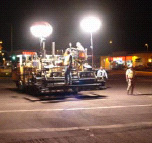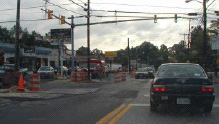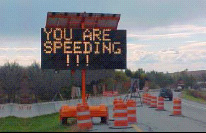U.S. Department of Transportation
Federal Highway Administration
1200 New Jersey Avenue, SE
Washington, DC 20590
202-366-4000
Download Version
PDF [157.5 KB]

As our highway infrastructure ages, many highway agencies are focusing on rebuilding existing roadways instead of building new ones. Highway improvement projects being performed on roadways that are open to traffic are increasing. At the same time, traffic continues to grow and creates more congestion. This combination of more work zones, heavier traffic, and greater reliance on night work results in increased risk for highway workers. The following methods can be used to minimize and control risks for workers:
High-visibility Apparel
Worker Training
Activity Area Planning
Speed Control
Positive Separation
Lighting
Worker Safety Planning
Special Devices


All workers should wear high visibility apparel.
Worker visibility during dawn or dusk conditions may be enhanced by the use of fluorescent colored high-visibility apparel.
The use of colors such as yellow-green for the worker apparel may help to differentiate the worker from the orange colored work vehicles, signs, drums, etc.
Workers should be trained in how to work near traffic.
Workers responsible for temporary traffic control should be adequately trained.
Work rules should be established and enforced to minimize worker risks from traffic.


Routes should be identified and marked to allow workers and work vehicles to safely enter and exit the work space.
Backing should be controlled by spotters or other positive means wherever workers or pedestrians may be present.
Overhead and underground utilities should be located and marked to prevent contact by equipment and workers.
Compliance with posted speed limits is important to protect workers and the traveling public. The following strategies can be used to control traffic speeds through work zones, whether or not the speed limit is reduced:

Establish appropriate speed limits for work zone
Properly posted regulatory speed limits
Law enforcement
Radar activated changeable message signs
Flaggers (under some conditions)
Separating traffic from work activities by the use of temporary traffic barriers, shadow vehicles with truck-mounted attenuators, or similar devices minimizes risk for both workers and travelers. The need for positive separation should be based on work zone factors including:

Traffic speed and volume
Distance between workers and traffic
Duration and type of work operations
Physical hazards present in the work zone
Alignment of traffic lanes through the work zone

Temporary lighting should be used in night work zones to accomplish the following:
The work area and its approaches should be lighted to provide better visibility for drivers to safely travel through the work zone.
Illumination should be provided wherever workers are present to make them visible.
Glare must be controlled so as not to interfere with the visibility of the work zone by drivers and workers.
Planning, implementation, and oversight of worker safety should be the responsibility of a competent safety specialist, and should adequately address the requirements of OSHA and MUTCD. In particular:
A hazard assessment of the work site should be conducted to identify worker risks.
Engineering and administrative controls and personal protective measures should be implemented to protect workers from the identified risk.
Judicious use of special traffic control devices may be helpful in reducing worker risks in certain work zone situations. These include:
Rumble strips
Changeable message signs
Intrusion alarms
Spotters
